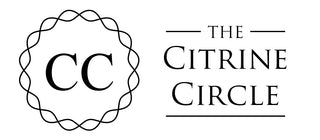Rutile is seldom sold as a crystal on its own, usually it is seen as an inclusion in Quartz. Tiny needles of Rutile inside other crystals is what causes the star effect, or asterism, in Star crystals such as Star Rose Quartz, Star Sapphire and more.
Rutile is one of the three main crystallised forms of Titanium Dioxide, the other two being Brookite, another highly collected crystal; and Anatase, a less well known one. It gets its name from the Latin word for reddish, "rutilus", although it was first discovered in the 1770s and described as Red Schorl (Tourmaline). It wasn't until 1800 that it was officially reclassified as Rutile.
Rutile and the other forms of Titanium Dioxide are popular in industry to make the bright white pigment known as Titanium White. Mineral sands are pulled up using dredge ships and they are ground into the white powder which is used to colour toothpaste, pharmaceuticals and even porcelain.
Rutile crystals are rarely found, and when they are they are usually fairly opaque. However they also have a higher refractive index and dispersion than diamonds, so synthetic Rutile will appear even more sparkly than it's more expensive counterpart! In the 1950s it was marketed under the trade name Titania as an alternative to diamond, however due to it's low hardness (it's only a 6 on the Moh's Scale, below Quartz), the gems scratched easily and so quickly fell out of favour.
High quality Rutile can be found in Bahia, Brazil, with the characteristic thick golden blades and the attached Hematite crystal. As a specimen, they are incredibly delicate, but when encased in Quartz it becomes a much safer way to admire their beauty.
Rutilated Quartz Properties include:
- Promoting psychic abilities
- Helps to bring enthusiasm to work and projects
- Eases guilt, anxiety and loneliness
- Helps you to see things you are missing
- Aids in sorting through and analysing your feelings
Find our Rutile & Rutilated Quartz collection here.

